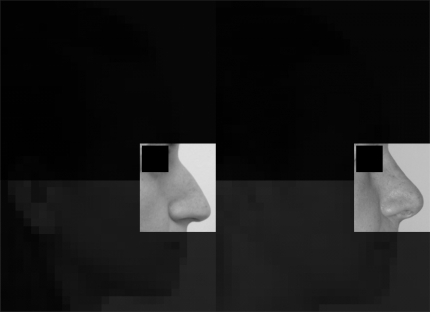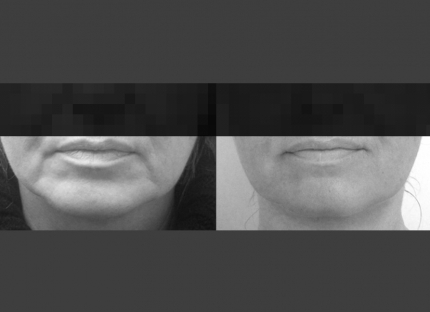Cosmetic
surgery
- Cosmetic
surgery - Cosmetic surgery of the face allows the correction of the non harmonious areas of the face and the correction of aging features
The surgeries that are most frequently requested are as follows:
Rhinoplasty
The aesthetic rhinoplasty is performed to change the shape and the overall size of the nose. That is to shape the tip, to remove the hump, to correct deviations or to improve the angle between the nose and the upper lip.
The purpose of rhinoplasty is not to create a perfect nose but that looks fake and taken out of context of the face (artificial), but rather a nose that harmoniously suits the face, by respecting its features and proportions (natural).
Rhinoplasty can be performed using a closed technique, completely with internal access to the nostrils, or with an open technique, with a very small incision of 2-3 mm at the lower part of the nose and therefore is invisible.
Rhinoplasty can be performed on an outpatient basis under local anesthesia with sedation or general anesthesia. The decision is agreed with the patient and depends on the length and type of surgery.
Cosmetic rhinoplasty may be combined with functional rhinoplasty when there are existing breathing problems that need to be corrected (septal deviation or hypertrophy of turbinates).
Blepharoplasty
Blepharoplasty is a surgical technique performed on upper and lower eyelids in order to achieve the rejuvenation of the periorbital region and therefore of the gaze.
The surgery aims at reducing the excess skin (and/or fat) of the upper eyelid and the so-called "bags" of the lower eyelids.
Blepharoplasty is performed by making the incisions in the skin of the eyelids, through which it is possible to remove the tissue that causes blemishes, those formed only by skin and those that depend on the subcutaneous tissue or fat.
Blepharoplasty is performed under local anesthesia, by injecting the local anesthetic in the eyelid and with sedation , that is with the assistance of an anesthetist administering medication which does not allow the patient to feel pain and not to recall the intra-surgical period.
Genioplasty
Genioplasty aims at the correction of chin imperfections due to an alteration of the bone such as the deviation of the chin, a receding chin or an excess of the chin.
The surgery is performed under local anesthesia/sedation or under general anesthesia with an incision inside the mouth. The bone of the chin is cut (osteotomy) and then is moved to a position suitable to correct the imperfections.
Otoplasty
Otoplasty corrects the blemishes of the external ear, and in particulare prominent ears, in a very definitive manner and with no visible scars.
Depending on the need, it may be appropriate to intervene on both ears, or on a single ear.
Otoplasty surgery is now carried out under local anesthesia with minimally invasive techniques and is therefore recommended for pre-school children, from 5-6 years old.
Malaroplasty (sculpting the cheekbones)
A Malaroplasty aims at the correction of imperfections of the middle third of the face and, especially, those due to a defects in the region of the cheekbones.
The defect in this region may be due to a bone defect of the cheekbone or a defect of the soft tissues that undergo progressive atrophy with advanced age and make the face look aged.
The malaroplasty creates a more pronounced zygomatic area that provides ample support for the overlying soft tissue with a real rejuvenating effect.
The surgery is performed under local anesthesia with sedation and an incision inside the mouth and inserting implants made of biocompatible material that is widely used in craniofacial reconstructions (Medpor ®) at the zygomatic bone (above the bone).
A good alternative is the transplant of fat, the so-called "lipofilling", performed via an injection technique.
Lipofilling
Lipofilling is a surgical procedure that involves the removal of autologous fat and its subsequent transfer to areas and the correction of anomalies in the volume of contours and facial surfaces as well as facial rejuvenation.
Lipofilling of the face is widely used to add volume to lips for example, cheekbones, lips etc., and to fill the deep wrinkles.
Fat is taken from the patient with special cannulas, and the outer band of the thigh and the abdomen are the most commonly used areas for sampling. The fat is then treated and purified and re-injected into those sites that require increased volume.
This technique has several advantages: it is minimally invasive, does not require the use of synthetic materials and, above all, provides natural and long lasting results. It can be performed alone or in conjunction with other procedures (orthognathic surgery, rhinoseptoplasty blepharoplasty, etc.).
Lifting
Facelift is a surgery that allows the rejuvenation of the face and neck, by stretching the skin tissues, the tissues under the skin and muscles and removing excess skin.
There are several surgical techniques for facelifts. From the complete facelift under general anesthesia to the most recent techniques with minimally invasive very small skin incisions and with the use of suspension wires under local anesthesia with sedation. The surgeon after having carefully examined the reasons behind and needs of the patient chooses the most appropriate method. A facelift can often be combined with additional treatments in order to improve the final result.
All these cosmetic surgeries are not covered by General Health Care Assistance and therefore can only be carried out in private practice.

